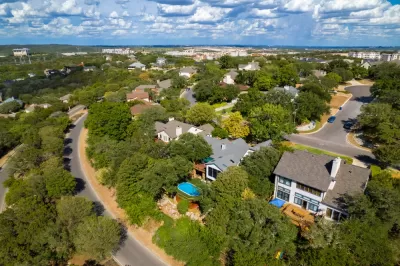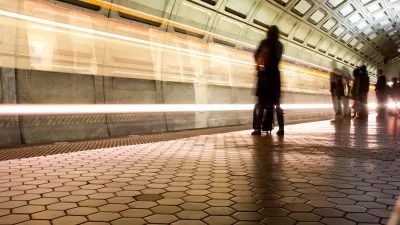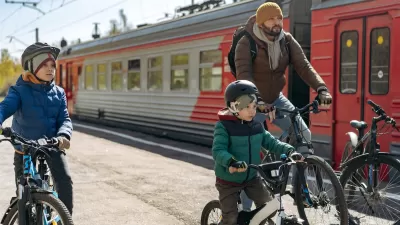The nonprofit has built over 300 homes in the last five years.

Houston Land Bank, a nonprofit that develops affordable housing, has been focusing on building accessible homes to ensure that people with disabilities can find housing.
As Roshan Abraham explains in an article for Next City, less than 5 percent of American housing stock is accessible, while 26 percent of Americans have a disability. “According to Lindsey Williams, director of community development at the land bank, building more than what’s required by the city’s building code — which does not mandate all units to be Americans with Disabilities Act, or ADA accessible – costs a little bit more for developers, ‘but it is something that we feel is important and the bare minimum in these cases, especially with the program of below market rate land.’”
Like other land banks, Houston Land Bank acquires vacant and tax-delinquent lots to build sorely needed affordable housing. Abraham notes that “The gap between the home price that residents can afford on the median income and actual housing prices increased by 275% between 2018 and 2023.” The land bank sells lots at roughly 50 to 90 percent of market value to developers who must meet affordability and other requirements. “Because the builder is getting a deal, the land bank can also mandate accessibility as a requirement and pass off the savings and the amenities to the home buyer.”
FULL STORY: How Houston Land Bank Is Building Accessible, Affordable Housing – While Turning a Profit

Study: Maui’s Plan to Convert Vacation Rentals to Long-Term Housing Could Cause Nearly $1 Billion Economic Loss
The plan would reduce visitor accommodation by 25,% resulting in 1,900 jobs lost.

North Texas Transit Leaders Tout Benefits of TOD for Growing Region
At a summit focused on transit-oriented development, policymakers discussed how North Texas’ expanded light rail system can serve as a tool for economic growth.

Why Should We Subsidize Public Transportation?
Many public transit agencies face financial stress due to rising costs, declining fare revenue, and declining subsidies. Transit advocates must provide a strong business case for increasing public transit funding.

How to Make US Trains Faster
Changes to boarding platforms and a switch to electric trains could improve U.S. passenger rail service without the added cost of high-speed rail.

Columbia’s Revitalized ‘Loop’ Is a Hub for Local Entrepreneurs
A focus on small businesses is helping a commercial corridor in Columbia, Missouri thrive.

Invasive Insect Threatens Minnesota’s Ash Forests
The Emerald Ash Borer is a rapidly spreading invasive pest threatening Minnesota’s ash trees, and homeowners are encouraged to plant diverse replacement species, avoid moving ash firewood, and monitor for signs of infestation.
Urban Design for Planners 1: Software Tools
This six-course series explores essential urban design concepts using open source software and equips planners with the tools they need to participate fully in the urban design process.
Planning for Universal Design
Learn the tools for implementing Universal Design in planning regulations.
City of Santa Clarita
Ascent Environmental
Institute for Housing and Urban Development Studies (IHS)
City of Grandview
Harvard GSD Executive Education
Toledo-Lucas County Plan Commissions
Salt Lake City
NYU Wagner Graduate School of Public Service





























